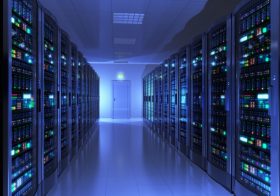Salesforce Adds Databricks to Growing AI Ecosystem

Salesforce (NYSE: CRM) has announced a partnership with Databricks that will enable bidirectional integration of data stored in both cloud-native platforms, along with the ability to tap machine learning models in Databricks to fuel applications in Salesforce.
The announcement, made at the Salesforce annual Dreamforce conference in San Francisco this week, follows a similar data-sharing announcement Salesforce made with Snowflake (NYSE: SNOW) last week. And it indicates the momentum behind Salesforce's efforts to grow an AI ecosystem to rival Oracle (NYSE: ORCL) and other enterprise application vendors.
Both Snowflake and Databricks integrations are part of what Salesforce calls its “Bring Your Own Lake,” or BYOL, strategy, which aims to create bidirectional data-sharing capabilities across data lake/data lakehouse platforms, avoiding the extract, transform, and load (ETL) burden that custom integrations suffered in the past. For now, it seems that the first two Salesforce BYOL partnerships differ in capability.
Databricks Offers Federation, AI Models
With Databricks, Salesforce appears to have more functionality right now than it does with Snowflake. With the former, Salesforce offers “BYOL data federation,” or the ability to access Databricks data from within the Salesforce Data Cloud. Salesforce customers also have “BYOL data sharing,” or access to their Salesforce Data Cloud from within Databricks.
Further, customers who use both Salesforce and Databricks can access AI models in Databricks Machine Learning, a feature of the Databricks platform that offers manual or automated model training.
Salesforce explains how the Databricks BYOL connection might be used: CRM (customer relationship management) data from Salesforce, such as a customer’s transaction history or service record, could be combined with non-CRM data such as economic forecasts or predictive models based on Databricks Machine Learning to upsell customers new products and services. Salesforce gives individual use cases for a bank, a car dealership, and a gaming studio. In each instance, AI could be deployed to advance revenue opportunities by matching specific customer information with trend analysis.
Snowflake Federation to Come but Modeling Is Available
In contrast, Snowflake appears to allow data sharing only – that is, Snowflake customers can access their Salesforce data from within Snowflake. They don’t have federation, or the ability to access Snowflake data from Salesforce. That should happen “in the coming months,” the press release states.
Meanwhile, it appears that customers can use CRM data from Salesforce to power AI models in Snowflake. “Once Salesforce data is in Snowflake, it can be used with access to AI/ML models,” writes a Snowflake spokesperson in email to Futuriom. “Early adopter customers are already using Snowpark [Snowflake developer platform] for recommendation engine, segmentation, and forecasting ML use cases on top of the shared Salesforce data.”
Interestingly, back in June 2023, Snowflake announced a partnership with NVIDIA (Nasdaq: NVDA) that provides Snowflake customers with access to NVIDIA’s NeMo large language model (LLM) development platform, along with its GPUs for accelerated computing. The goal is for customers to build their own LLMs with their data stored in the Snowflake Data Cloud. Now, Salesforce customers can tap into the NVIDIA NeMo platform once their data is available in Snowflake.
Salesforce Aims for Model Partnerships
The partnerships with Databricks and Snowflake are the latest efforts by Salesforce in what’s clearly a push to get ahead of the curve in AI that’s driven by fierce competition from Oracle and other enterprise software vendors. But where Oracle is focusing efforts on delivering compute capabilities to its customers, Salesforce is stressing partnerships to enable wider access to data and specific AI models.
In addition to the partnerships listed above, for instance, Salesforce also announced a partnership with Google that according to the press release will allow customers “to bring their Google-hosted LLM models from Vertex AI, including PaLM 2, to Einstein Copilot Studio via the Einstein Trust Layer to build generative AI experiences in the [Salesforce] Customer 360 [platform].” And Salesforce has unveiled an AWS partnership that continues the BYOL theme by allowing AWS customers to access data from Amazon Redshift and Amazon data lakes on AWS, as well as accessing AI models in Amazon Bedrock and Amazon Sagemaker. Also last week, Salesforce announced a partnership with McKinsey & Co. to access the service firm’s AI models and other AI-related assets. Salesforce calls the access to other vendors’ models BYO LLM for “bring your own large language model.”
All of this, along with Saleforce’s widespread investment in AI startups, including the ubiquitous Hugging Face, signals a deep commitment to a generative AI ecosystem that will enable competitive new products and services.
Futuriom Take: Salesforce is betting heavily on generative AI and is establishing an ecosystem that should help it stay competitive as AI’s role evolves in enterprise applications.



















